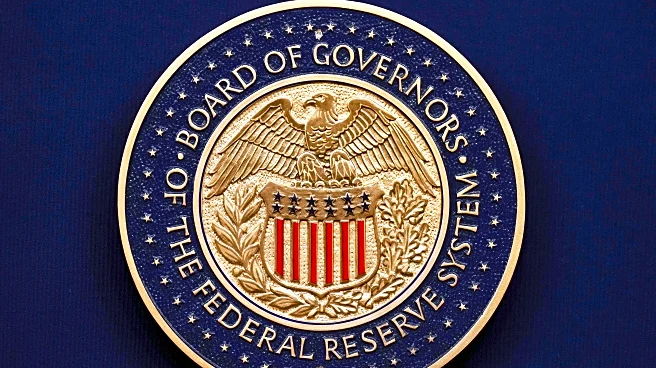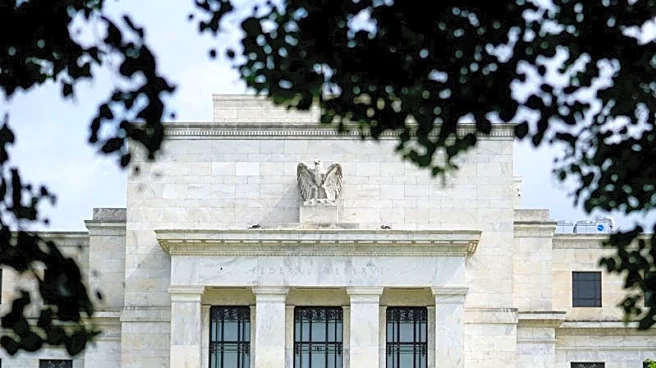What's Happening?
The Federal Reserve has reduced its benchmark interest rate by a quarter point, marking the second cut since September. This decision aims to address the dual challenges of elevated inflation and a weak
job market. Despite the rate cut, consumers may not see immediate reductions in interest rates for credit cards, auto loans, and mortgages. The federal funds rate influences the cost of borrowing, but the impact on consumer financial products can be gradual. High-yield savings accounts and certificates of deposit may experience reduced yields, while mortgage rates have already adjusted to the anticipated cut.
Why It's Important?
The Federal Reserve's rate cut is intended to stimulate economic growth and support employment, but its effects on consumer borrowing costs may be delayed. This situation underscores the complexity of monetary policy in addressing inflation and employment simultaneously. Consumers carrying high-interest debt may benefit from lower servicing costs over time, but immediate relief may be limited. The rate cut reflects broader economic challenges, including the impact of government shutdowns on data collection and the ongoing pressure of inflation on household budgets.
What's Next?
The Federal Reserve is expected to make another rate cut before the end of the year, which could further influence consumer loan rates. Financial institutions may gradually adjust their offerings, potentially providing relief to borrowers. Consumers are advised to prioritize paying down high-interest debt and explore refinancing options. The evolving economic landscape may prompt discussions on fiscal policy measures to complement monetary policy efforts in supporting growth and employment.
Beyond the Headlines
The interplay between interest rates and consumer financial health highlights the importance of financial literacy and planning. As rates fluctuate, consumers may need to reassess their savings and investment strategies to optimize returns. The broader economic context, including government fiscal policies and global economic trends, can also influence domestic financial conditions. Understanding these dynamics can empower consumers to make informed decisions about their financial futures.













